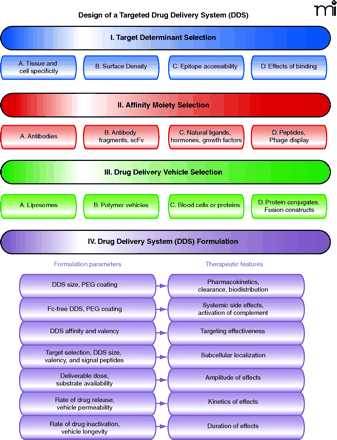
- Institution: Stanford Univ Med Ctr Lane Med Lib/Periodical Dept/Rm L109
- Sign In as Member / Individual
Advanced Drug Delivery Systems That Target The Vascular Endothelium

Targeted drug delivery systems (DDS) design. This schematic flowchart illustrates a generic algorithm for rational design and key parameters of a targeted drug delivery system. This review analyzes aspects of this schema that are pertinent to DDS targeting to endothelial cells (EC). For the sake of coordinating diverse parameters, the schema depicts a sequential organization of DDS design, divided into four blocks, from target selection to characterization of its pharmacokinetic and therapeutic features. Each block is divided into a few major parameters or categories. In practice, a DDS design may start with the synthesis of a new drug vehicle potentially suitable for EC targeting or the selection of a peptide that binds to EC or certain subtypes of EC. Final therapeutic features of a given DDS are governed by a complex interplay between factors depicted in all four blocks. For example, circulation and systemic side-effects of a DDS are dependent on the features of both affinity moiety (e.g., Fc fragment–mediated clearance and side effects) and vehicle (e.g., presence of PEG-coating providing stealth features), whereas subcellular localization of a drug is controlled by features of the selected target determinant, valency, and size of DDS.


